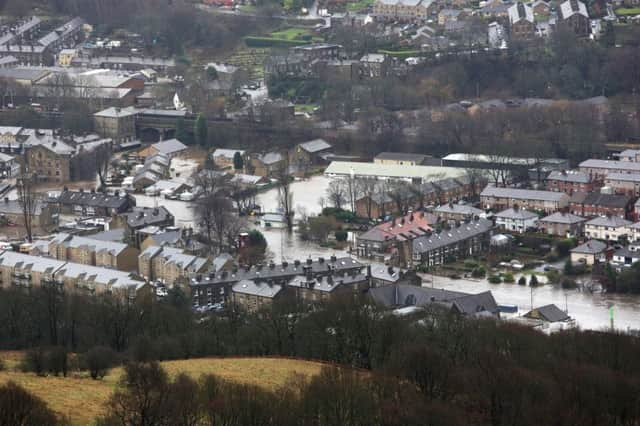Insurance support for flood victims


This month Halifax Home Insurance flood claims were 738 per cent above the typical volumes for December.
Many of the insurer’s own Personal Claims Consultants have been redeployed from around the country to help flooded customers, particularly in the north west of England.
Advertisement
Hide AdAdvertisement
Hide AdDedicated PCCs are currently working through the Christmas holidays to ensure flood victims receive immediate support and teams are continuing their support for those affected.
Senior Claims Manager for Halifax Home Insurance, Martyn Foulds said: “With more heavy rain on the way, further flooding is highly likely in Lancashire and West Yorkshire. We are advising homeowners who are at risk to take steps now to reduce the risk of damage to their homes, and to monitor local news and weather updates.”
According to Halifax Home Insurance claims data, the average cost of a claim for flood damage last year was just over £34,000 per incident, so taking steps now is essential to minimise property damage.
If your home is at risk of flooding:
Place sandbags outside doors, airbricks, windows and any other holes to reduce the amount of water entering your property
Turn off the mains supplies of water, gas and electricity
Advertisement
Hide AdAdvertisement
Hide AdUnplug all electrical items, and store them upstairs or as high as possible
Disconnect pipes to washing machine and dishwashers to avoid damage if appliances move during the flood
Move as much furniture as possible upstairs, weigh down large items that can’t be lifted with sandbags so they don’t move and cause damage
Empty contents of cupboards and drawers, and store upstairs or as high as possible
Move rugs and curtains upstairs or to higher ground
Advertisement
Hide AdAdvertisement
Hide AdKeep your home insurer’s policy details and telephone numbers to hand in case you need to make a claim
Remember to move sentimental items upstairs or to a safe place as these cannot be replaced
If your home has already been flooded:
Ensure mains supplies of water, electricity and gas have been checked for damage by a qualified engineer before reconnecting
Dry out appliances that have been affected by water and ensure a qualified electrician or Gas Safe registered engineer inspects them before use
Advertisement
Hide AdAdvertisement
Hide AdOpen doors and windows to ventilate and dry out the property. Ensure the home has completely dried before attempting redecorating work
Contact your insurer and report any damage caused to buildings and/or contents as soon as possible
Take photographs of damaged items as it may help your insurer to settle a claim
Keep any ruined property as insurers may want to inspect it.
In an emergency:
Advertisement
Hide AdAdvertisement
Hide AdKeep a home emergency kit prepared in case of a winter emergency such as a flood or severe storm. This could include sandbags, torches, spare bulbs and batteries, your home insurance documents, other emergency contact details, tinned food, warm clothing and blankets
Monitor radio and online updates on the weather or other emergency situations.
Swinton Insurance is also offering to help customers and non-customers affected by the floods with their insurance claim. This support is available at the company’s Halifax branch.
Zoe Whyte, branch manager at Swinton Insurance in Halifax, said: “Anyone living in areas presently affected by flooding is encouraged to call into our Halifax branch for face-to-face, personal support with their insurance claim and help understanding their policies – regardless of whether they are a Swinton customer.
We hope this will be a useful first step in helping our local community get back on their feet at this stressful time.”